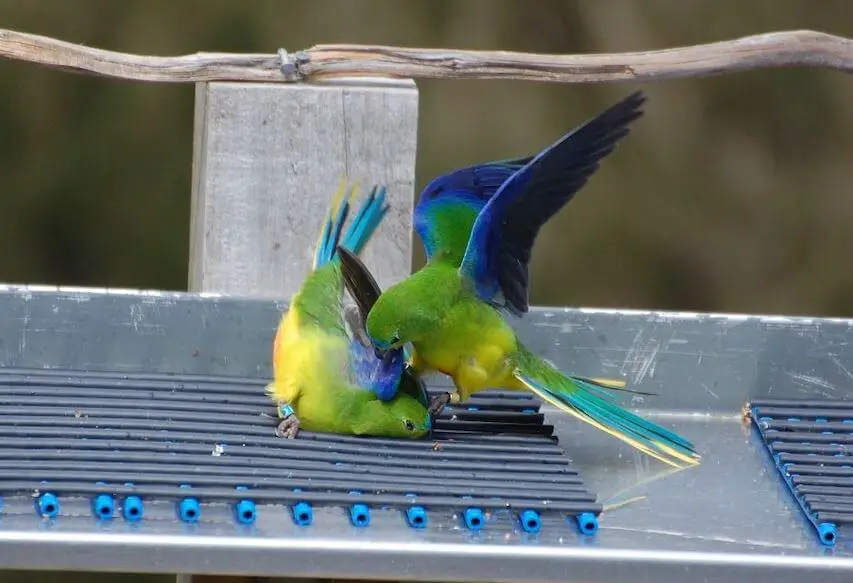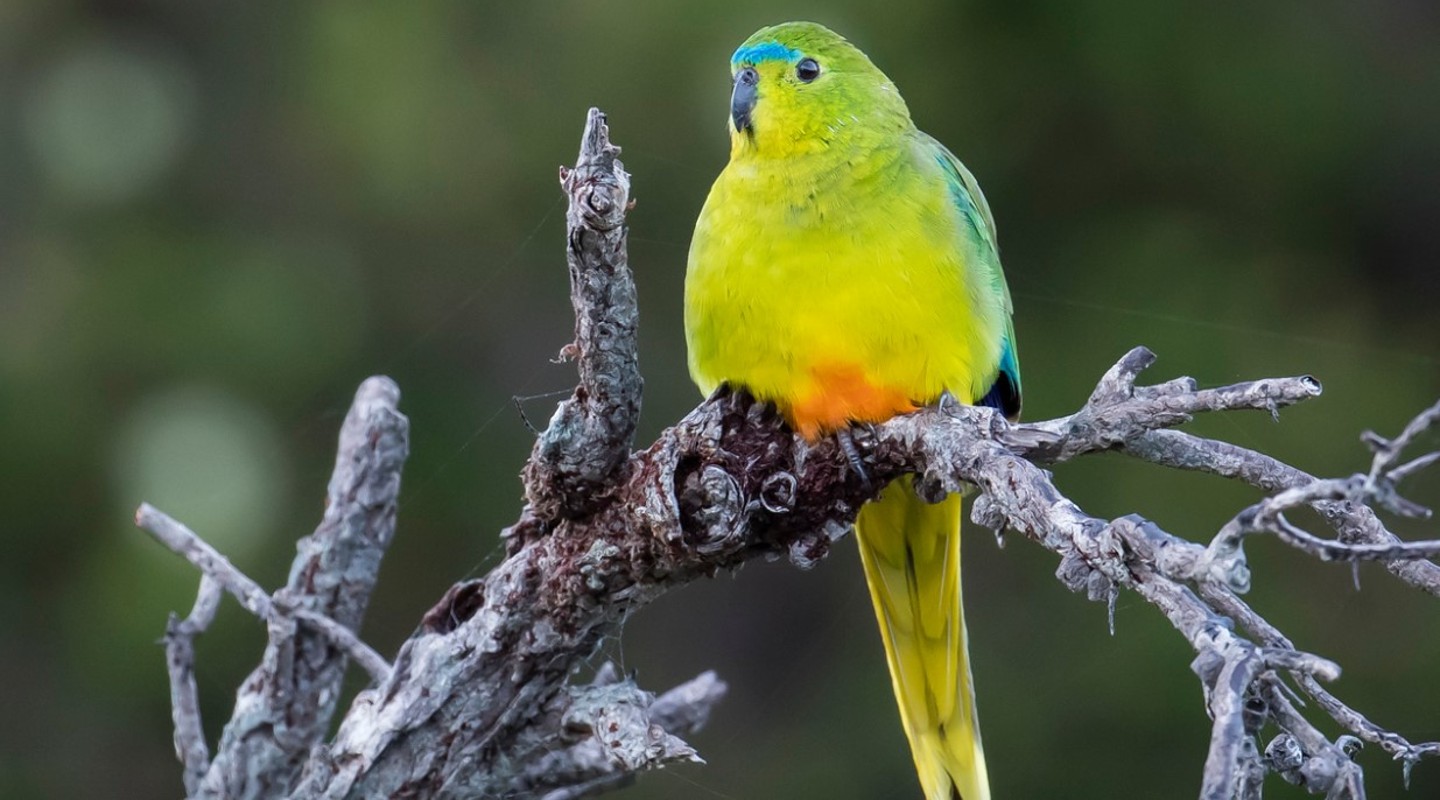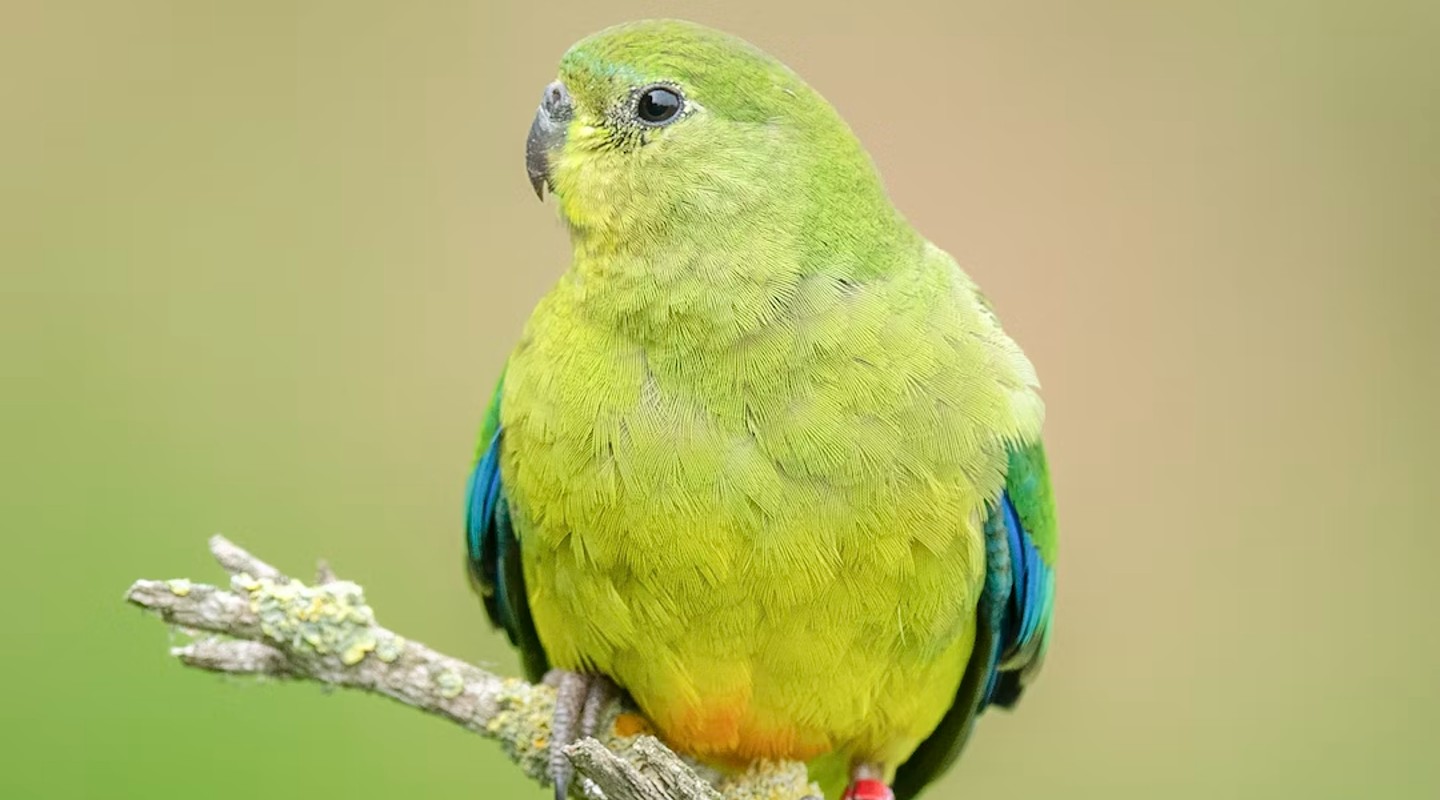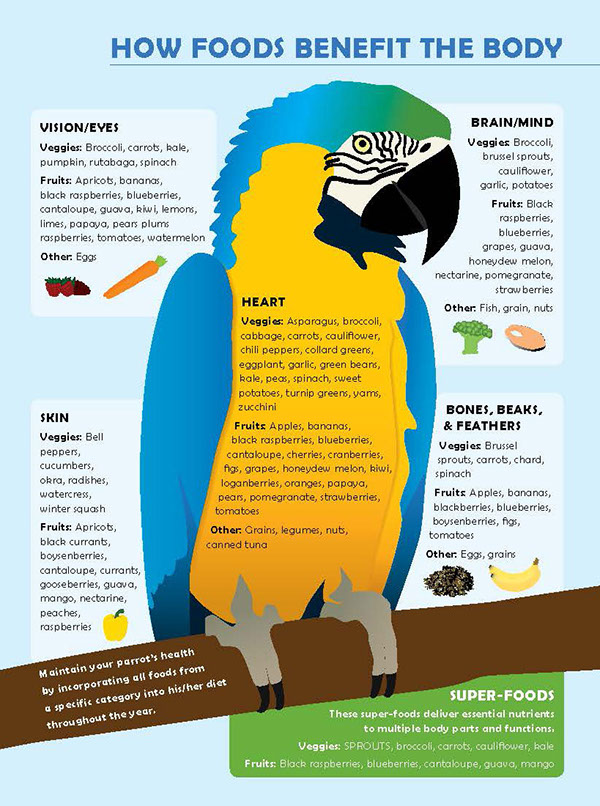
Orange bellied Parrot Subspecies Distribution Breeding Habitat Diet
The orange-bellied parrot ( Neophema chrysogaster; Figure 1) is a small bird (∼40 g) endemic to coastal areas of Southeastern Australia and is part of a group of six closely related 'grass parrots'. Orange-bellied parrots form the subgenus Neonanodes, along with four other similar looking species.

Orangebellied Parrot BirdLife Australia
Diet They forage in saltmarshes on low shrubs and groundcovers. They eat mainly seeds, fruits, flowers and berries of saline vegetation e.g. chenopods (salt bushes), Sea Rocket (Cakile maritima) and Bidgee-widgee (Acaena novae-zelandiae). Breeding These birds breed in November-December only in south-western Tasmania.

Orange Bellied Parrot Endangered Wildlife
The orange-bellied parrot ( Neophema chrysogaster ) is a small parrot endemic to southern Australia, and one of only three species of parrot that migrate. It was described by John Latham in 1790. A small parrot around 20 cm (8 in) long, it exhibits sexual dimorphism.

Orange bellied parrot
The Orange-bellied Parrot breeds only in Tasmania, with most of the population migrating to Victoria and South Australia in the winter.. Feeding and diet. The Orange-bellied Parrot feeds on the ground or on low-growing shrubs, with food consisting of seeds, fruits, flowers and berries of sedges, herbaceous plants and plants that grow in.

Unprecedented access Inside Tasmania's orangebellied parrot captive breeding program
Small grassy-green parrot that feeds on the ground. Bright green and yellow with blue wings and yellow lower belly with a central orange patch, yellowish throat, and thin mid-blue line between eyes. Compare Blue-winged Parrot (olive-green), Rock Parrot (duller olive-green) and Elegant Parrot (yellow-green, more distinct yellow patch in front of eye). Migratory, breeding in tree hollows on.

Can parrots eat oranges? petcarebase
Foraging and diet Breeding ecology; Orange-bellied parrot (Neophema chrysogaster) Variety of coastal and near coastal habitats, especially button-grass plains in breeding area and saltmarsh habitat at mainland wintering sites. Obligate migrant between Tasmania and south-eastern mainland Australia.

Orange bellied Parrot Biological Science Picture Directory
Diet The orange-bellied parrot is a herbivore. They feed on seeds, fruits, flowers, berries and sedges. Feeding occurs at ground level or on low shrubs. While feeding their green coloration blends in with the grasses on the ground or with the shrubs on which they are feeding.

Orangebellied Parrot BirdLife Australia
Diet mainly comprises seeds and fruits of sedges and salt-tolerant coastal and saltmarsh plants. Occasionally, flowers and stems are eaten. Orange-bellied Parrots are known to forage among flocks of Blue-winged Parrots. Recent records from unexpected places, including Shellharbour and Maroubra suggest that the species may be expanding their.

Australian endangered species Orangebellied Parrot
The orange-bellied parrot ( Neophema chrysogaster) is a small parrot endemic to southern Australia, and one of only three [citation needed] species of parrot that migrate. It was described by John Latham in 1790. A small parrot around 20 cm (8 in) long, it exhibits sexual dimorphism.

Orange Bellied Parrot Endangered Wildlife
Bird profiles Orange-bellied Parrot Orange-bellied Parrot Scientific name Neophema chrysogaster Bird family parrots Status Critically Endangered (CR) The Orange-bellied Parrot is a small grass parrot with an orange patch on its belly and is one of Australia's most threatened bird species.

OrangeBellied Parrots (Neophema Chrysogaster) Miles To The Wild
Species Information. The Orange-bellied Parrot (OBP) is a small (45-50g), migratory ground parrot. Their breeding range has declined significantly, and breeding is now only known to occur at Melaleuca in south-west Tasmania. OBPs are bright grassy green on their backs, wings and flanks, with a yellow chest and some blue on their wings and brow.

Millions to save endangered Orangebellied parrot The Weekly Times
Orange bellied Parrot 20-21 cm; mean 42 g. Similar to N. Chrysostom but much less yellow in face, crown, and upperparts bright green, orange belly patch

Orange Bellied Parrot Endangered Wildlife
That event was the laying of more than a hundred eggs by the birds and the successful hatching of 42 of them. Using a variety of different measures in diet, and habitat tweaks, the Orange-Bellied Parrot began to successfully hatch their eggs. In December of 2016, the first chick was hatched starting what is now considered to be the most.

BirdTricks Parrot Infographic on Behance
An orange-bellied parrot alights on a branch at Melaleuca, south-west Tasmania.. canola and flax seed that supplements the diet of wild seed they forage from the button grass plains around this.

About Orangebellied Parrots Department of Natural Resources and Environment Tasmania
As a member, you receive 400+ pages of additional information. Listen to exciting Podcast interviews with parrot specialists from around the world, many available for WPT members only. Download 90+ desktop wallpaper images and +38 ringtones for your phone. Sign Up / Login.

Keeping our Orangebellied Parrots safe Birdwatching at Western Treatment Plant Your Say
About Us Orange-bellied Parrot Zoos Victoria Fighting Extinction Local threatened species The Orange-bellied Parrot is Critically Endangered. This very special bird is one of only two migratory parrot species in the world. There are very few Orange-bellied Parrots left in the wild.